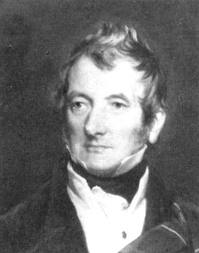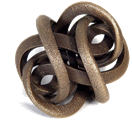Annotation:Lord John Campbell (1): Difference between revisions
No edit summary |
m (Text replacement - "garamond, serif" to "sans-serif") |
||
| (7 intermediate revisions by one other user not shown) | |||
| Line 1: | Line 1: | ||
'''Back to [[{{BASEPAGENAME}}]]''' | =='''Back to [[{{BASEPAGENAME}}]]'''== | ||
---- | ---- | ||
<p><font face=" | <p><font face="sans-serif" size="4"> | ||
'''LORD JOHN CAMPBELL [1].''' Scottish, Slow Strathspey. D Major. Standard tuning (fiddle). AABB (Skinner): AABBCD (Honeyman). AABBCCDD (Athole, Cranford/Holland, Gow, Kerr). The strathspey the Gows called "Lord John Campbell" was originally a six-turn composition of expatriate Scottish dancing master and fiddler-composer [[Biography:Duncan MacIntyre]], who called it "[[Miss Cumming's Strathspey]]," according to John Glen (1895). The melody (under the "Lord John" title) is attributed to MacIntyre in Skinner's '''Harp and Claymore''' (1904, see ms. entry), although it appears | '''LORD JOHN CAMPBELL [1].''' Scottish, Slow Strathspey. D Major. Standard tuning (fiddle). AABB (Skinner): AABBCD (Honeyman). AABBCCDD (Athole, Cranford/Holland, Gow, Kerr, Milne). The strathspey the Gows called "Lord John Campbell" was originally a six-turn composition of expatriate Scottish dancing master and fiddler-composer [[Biography:Duncan MacIntyre]], who called it "[[Miss Cumming's Strathspey]]," according to John Glen (1895). The melody (under the "Lord John" title) is attributed to MacIntyre in Skinner's '''Harp and Claymore''' (1904, see ms. entry), although it appears unattributed in Gow's '''Fourth Collection'''. Gow is deemed responsible for the name change. Somewhat confusingly, MacIntyre did compose tune for Lord John, but it is a different melody (see "[[Lord John Campbell (2)]]"). J. Scott Skinner composed a variation set for the tune, which appears in his '''Harp and Claymore''' collection (1904). In his notes on his manuscript copy [http://www.abdn.ac.uk/scottskinner/display.php?ID=JSS0108] of the strathspey (to his publisher, for the '''Harp and Claymore''') Skinner adds a footnote saying that his version is the one played by fiddler Archie Menzies in an 1856 Edinburgh competition among twenty-two players, when Menzies won first prize. Skinner further says the tune was also played by his friend Peter Milne at another competition (in Aberdeen), where Milne also won first prize. | ||
<br> | <br> | ||
<br> | <br> | ||
[[File:johncampbell7.jpg|200px|thumb|left|John Campbell, 7th Duke of Argyll]] | [[File:johncampbell7.jpg|200px|thumb|left|John Campbell, 7th Duke of Argyll]] | ||
The | The Gows' title references either John Campbell, 5th Duke of Argyll (1723–1806), styled Marquess of Lorne from 1761 to 1770, or his third son, John Douglas Edward Henry Campbell [http://en.wikipedia.org/wiki/John_Campbell,_7th_Duke_of_Argyll] (1777-1847) of Ardincaple, 7th Duke of Argyll. The latter was known as Lord John Campbell until 1839, when his older brother died, and Lord John succeeded as Duke. He was married three times and was a Scottish peer and Whig politician, representing Argyll for decades. See also the several tunes composed Lady Charlotte Campbell daughter and sister respectively of the Lord Johns. | ||
<br> | <br> | ||
<br> | <br> | ||
</font></p> | </font></p> | ||
<p><font face=" | <p><font face="sans-serif" size="4"> | ||
''Source for notated version'': | ''Source for notated version'': | ||
<br> | <br> | ||
<br> | <br> | ||
</font></p> | </font></p> | ||
<p><font face=" | <p><font face="sans-serif" size="4"> | ||
''Printed sources'': Carlin ('''The Gow Collection'''), 1986; No. 122. Cranford ('''Jerry Holland: The Second Collection'''), 2000; No. 121, p. 46. Gow ('''Fourth Collection of Niel Gow's Reels'''), 2nd ed., originally 1800; p. 10. Honeyman ('''Strathspey, Reel and Hornpipe'''), 1898; p. 37. Kerr ('''Merry Melodies'''), | ''Printed sources'': Carlin ('''The Gow Collection'''), 1986; No. 122. Cranford ('''Jerry Holland: The Second Collection'''), 2000; No. 121, p. 46. Gow ('''Fourth Collection of Niel Gow's Reels'''), 2nd ed., originally 1800; p. 10. Honeyman ('''Strathspey, Reel and Hornpipe'''), 1898; p. 37. Kerr ('''Merry Melodies, vol. 2'''), c. 1880's; No. 165, p. 19. Milne ('''Middleton’s Selection of Strathspeys, Reels &c. for the Violin'''), 1870; p. 14. '''Ryan's Mammoth Collection''', 1883; p. 168. Skinner ('''Harp and Claymore'''), 1904; p. 82. Stewart-Robertson ('''The Athole Collection'''), 1884; p. 115. | ||
<br> | <br> | ||
<br> | <br> | ||
</font></p> | </font></p> | ||
<p><font face=" | <p><font face="sans-serif" size="4"> | ||
''Recorded sources'': <font color=teal></font> | ''Recorded sources'': <font color=teal></font> | ||
<br> | <br> | ||
<br> | <br> | ||
</font></p> | </font></p> | ||
<p><font face=" | <p><font face="sans-serif" size="4"> | ||
See also listing at:<br> | See also listing at:<br> | ||
Alan Snyder's Cape Breton Fiddle Recording Index [http://www.cbfiddle.com/rx/tune/t2026.html]<br> | Alan Snyder's Cape Breton Fiddle Recording Index [http://www.cbfiddle.com/rx/tune/t2026.html]<br> | ||
| Line 32: | Line 32: | ||
<br> | <br> | ||
---- | ---- | ||
'''Back to [[{{BASEPAGENAME}}]]''' | =='''Back to [[{{BASEPAGENAME}}]]'''== | ||
Latest revision as of 14:17, 6 May 2019
Back to Lord John Campbell (1)
LORD JOHN CAMPBELL [1]. Scottish, Slow Strathspey. D Major. Standard tuning (fiddle). AABB (Skinner): AABBCD (Honeyman). AABBCCDD (Athole, Cranford/Holland, Gow, Kerr, Milne). The strathspey the Gows called "Lord John Campbell" was originally a six-turn composition of expatriate Scottish dancing master and fiddler-composer Biography:Duncan MacIntyre, who called it "Miss Cumming's Strathspey," according to John Glen (1895). The melody (under the "Lord John" title) is attributed to MacIntyre in Skinner's Harp and Claymore (1904, see ms. entry), although it appears unattributed in Gow's Fourth Collection. Gow is deemed responsible for the name change. Somewhat confusingly, MacIntyre did compose tune for Lord John, but it is a different melody (see "Lord John Campbell (2)"). J. Scott Skinner composed a variation set for the tune, which appears in his Harp and Claymore collection (1904). In his notes on his manuscript copy [1] of the strathspey (to his publisher, for the Harp and Claymore) Skinner adds a footnote saying that his version is the one played by fiddler Archie Menzies in an 1856 Edinburgh competition among twenty-two players, when Menzies won first prize. Skinner further says the tune was also played by his friend Peter Milne at another competition (in Aberdeen), where Milne also won first prize.

The Gows' title references either John Campbell, 5th Duke of Argyll (1723–1806), styled Marquess of Lorne from 1761 to 1770, or his third son, John Douglas Edward Henry Campbell [2] (1777-1847) of Ardincaple, 7th Duke of Argyll. The latter was known as Lord John Campbell until 1839, when his older brother died, and Lord John succeeded as Duke. He was married three times and was a Scottish peer and Whig politician, representing Argyll for decades. See also the several tunes composed Lady Charlotte Campbell daughter and sister respectively of the Lord Johns.
Source for notated version:
Printed sources: Carlin (The Gow Collection), 1986; No. 122. Cranford (Jerry Holland: The Second Collection), 2000; No. 121, p. 46. Gow (Fourth Collection of Niel Gow's Reels), 2nd ed., originally 1800; p. 10. Honeyman (Strathspey, Reel and Hornpipe), 1898; p. 37. Kerr (Merry Melodies, vol. 2), c. 1880's; No. 165, p. 19. Milne (Middleton’s Selection of Strathspeys, Reels &c. for the Violin), 1870; p. 14. Ryan's Mammoth Collection, 1883; p. 168. Skinner (Harp and Claymore), 1904; p. 82. Stewart-Robertson (The Athole Collection), 1884; p. 115.
Recorded sources:
See also listing at:
Alan Snyder's Cape Breton Fiddle Recording Index [3]
